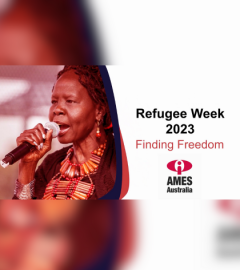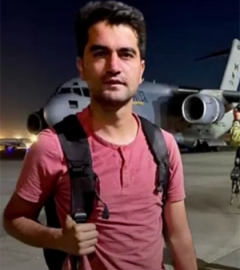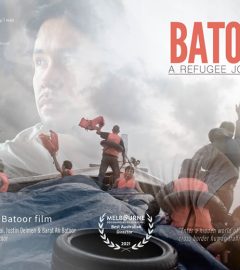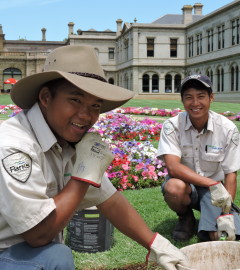Refugee camps under climate threat
Refugee camps are set to become uninhabitable by 2050 as extreme weather events worsen, the UN refugee agency UNHCR has warned.
Over the past decade, weather-related disasters accounted for 250 million internal displacements, the equivalent of around 70,000 every day, or two displacements every three seconds. Returns to Syria and Afghanistan this year have contributed to lower global displacement than in 2024.
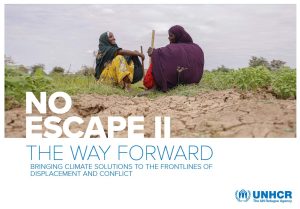 A new UNHCR report, titled ‘The Way Forward: Bringing climate solutions to the frontlines of displacement and conflict’, pointed out that three in four of all those who’ve been uprooted now live in countries where frontline communities face “high-to-extreme” exposure to climate-related hazards.
A new UNHCR report, titled ‘The Way Forward: Bringing climate solutions to the frontlines of displacement and conflict’, pointed out that three in four of all those who’ve been uprooted now live in countries where frontline communities face “high-to-extreme” exposure to climate-related hazards.
It found three in every four refugees or people displaced by conflict are currently living in countries facing high-to-extreme exposure to climate-related hazards.
And of the 1.2 million refugees returned home in early 2025, half of them went to climate-vulnerable areas.
Seventy-five per cent of land in Africa is deteriorating, with over half of refugee settlements in high-stress areas.
And nearly all current refugee settlements will face an unprecedented rise in hazardous heat. By 2050, the hottest fifteen refugee camps in the world – located in Gambia, Eritrea, Ethiopia, Senegal and Mali – are projected to face nearly 200 days or more of hazardous heat stress per year.
The report says that by 2040, the number of countries facing extreme climate hazards could rise from three to 65.
Since April 2023, nearly 1.3 million people fleeing the conflict in Sudan have sought refuge in South Sudan and Chad, two countries among the least equipped to cope with the growing climate emergency, it says.
Over the past decade, weather-related disasters accounted for 250 million internal displacements, the equivalent of around 70,000 every day, or two displacements every three seconds. Returns to Syria and Afghanistan this year have contributed to lower global displacement than in 2024 UNHCR says.
Outgoing UN High Commissioner for Refugees Filippo Grandi said extreme weather was becoming an existential threat to refugees living uncamps.
“Extreme weather is putting people’s safety at greater risk; it is disrupting access to essential services, destroying homes and livelihoods and forcing families – many who have already fled violence – to flee once more,” Mr Grandi said.
“These are people who have already endured immense loss, and now they face the same hardships and devastation again. They are among the hardest hit by severe droughts, deadly floods and record-breaking heatwaves, yet they have the fewest resources to recover.”
Around the world, basic survival systems for refugees are already under strain, UNHCR warned.
In parts of flood-affected Chad, for instance, newly arrived refugees fleeing the war in neighbouring Sudan receive fewer than 10 litres of water a day, which is far below emergency standards, the report said.
Evidence also indicates that by 2050, the hottest refugee camps could face nearly 200 days of extreme heat stress per year, with serious risks to health and survival.
“Many of these locations are likely to become uninhabitable due to the deadly combination of extreme heat and high humidity,” the report said.
It said that 1.2 million refugees returned home in early 2025 but half of this number arrived in “climate-vulnerable” areas.
Meanwhile, 75 per cent of land across the continent of Africa is deteriorating and that more than one in two refugee settlements are located in “high stress” areas.
“This is shrinking access to food, water and income,” the UN agency insisted, driving recruitment to armed groups in parts of the Sahel, fuelling conflict and repeated displacement,” the report said.
Despite rising needs, funding shortfalls and what UNHCR calls “a deeply inequitable climate finance system” have left millions unprotected. Today, conflict-affected countries that host refugees receive only one quarter of the climate finance they need, while the vast majority of global climate funding never reaches displaced communities or their hosts, it said.
“Funding cuts are severely limiting our ability to protect refugees and displaced families from the effects of extreme weather,” Mr. Grandi said at the UN COP30 climate summit in Belem, Brazil.
“If we want stability, we must invest where people are most at risk. To prevent further displacement, climate financing needs to reach the communities already living on the edge. They cannot be left alone. This COP must deliver real action, not empty promises,” he said.
Read the full report: No Escape II – The way forward | UNHCR




